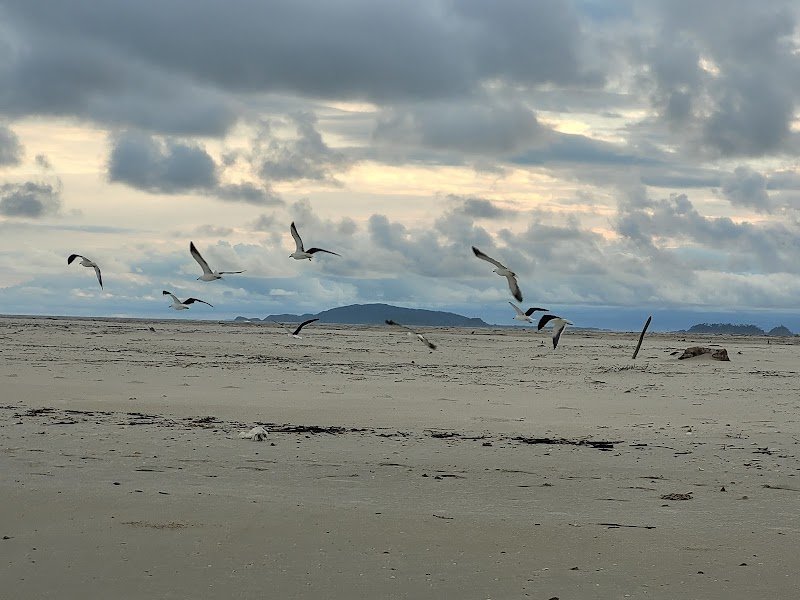Venturing into Superagüi National Park: Rainforests and Remote Shores of Guaraqueçaba
Superagüi National Park immerses you in untouched Atlantic rainforest and stretches of isolated beaches where the ocean’s currents challenge and beckon. Discover a practical guide to navigating this wild landscape with moderate hikes, local guidance, and essential preparations.
Start Early to Beat the Heat
Begin hikes in the early morning to avoid afternoon heat and rainfall. Wildlife is more active, and paths are less slippery before the humidity peaks.
Wear Waterproof Hiking Shoes
Expect wet roots, muddy patches, and occasional river crossings. Good traction and water resistance protect your feet and stability.
Carry Sufficient Water
Natural fresh water is limited. Bring at least 2 liters per person for a day hike to stay hydrated and maintain energy levels.
Book a Local Guide
Guides provide navigation through dense forest trails, insight into local ecology, and help respect park regulations, enhancing safety and experience.
Venturing into Superagüi National Park: Rainforests and Remote Shores of Guaraqueçaba
Superagüi National Park in Guaraqueçaba, Paraná, offers adventurers a rare chance to walk through some of Brazil’s least disturbed Atlantic rainforest and discover beaches that remain almost untouched by visitors. Here, towering trees lean in close, their branches trailing curious vines that catch the humid breeze like whispered secrets. The forest floor, soft and damp underfoot, gives way intermittently to narrow paths that climb or descend with moderate challenge – expect elevation changes up to 200 meters over undulating terrain. The wildlife isn’t shy; franzini monkeys chatter overhead, daring you to keep pace, while bright parrots slice through the canopy’s light.
The journey to isolated beaches is a shift in rhythm. Here the forest opens abruptly to reveal stretches of golden sand where the Atlantic Ocean pulls and pushes with steady resolve. Currents surge near rocky outcrops, demanding respect for those tempted to swim. Friendly local guides recommend early morning departures when humidity is lower and wildlife is most active. The trek itself averages 8 to 12 kilometers round-trip, making it accessible to hikers with moderate fitness—but sturdy, waterproof footwear is necessary to handle slippery roots and occasional wet crossings.
Planning ahead is key. Pack adequate water and snacks; natural sources are scarce on the trails. Weather can shift quickly, with afternoon rains common from November through March. Communicate with local visitor centers to arrange guide services and transport, since infrastructure is minimal and access limited by tides and boat schedules. The reward is pristine nature fiercely itself, lending a quiet thrill that comes from being somewhere few have trod.
This is a place where each step feels like an invitation to observe, respect, and engage with the raw pulse of nature—whether threading through dense greenery or standing on a wind-whipped beach with the ocean pressing forward. Superagüi isn’t a park to conquer, but a wild partner to meet on its own terms.
Nearby Trips
All Adventures
Boat Charters
Water Activities
Adventures near Guaraqueçaba
Discover the unique and memorable adventures that make Guaraqueçaba special.
Frequently Asked Questions
Do I need a guide to explore Superagüi National Park?
While not legally mandatory for all trails, hiring a local guide is strongly recommended. They provide critical knowledge to navigate the remote paths and enhance safety, plus share insights on the park’s ecology and culture.
What wildlife can I expect to see in the park?
Visitors often encounter capuchin and franzini monkeys, various protected birds like toucans and parrots, and sea turtles along the beaches — especially during their nesting seasons.
How do I get to Superagüi National Park from Guaraqueçaba?
Access involves a combination of boat and foot travel. Boats from Guaraqueçaba harbor shuttle visitors across channels to the park’s trailheads; arrange transport locally as schedules depend on tides and demand.
Are there any dangerous animals or plants to beware of?
While the park’s fauna is generally non-aggressive, caution around snakes and certain insect species is necessary. Avoid touching unknown plants, and wear long sleeves and pants to protect skin.
What is the best time of day to visit the beaches in the park?
Early morning visits offer calm waters and lower temperatures, ideal for hiking to the beaches and wildlife viewing before afternoon winds and rain develop.
Is camping allowed inside Superagüi National Park?
Camping is restricted to designated zones and requires prior permission from park authorities. Most visitors stay in local lodges or guesthouses in Guaraqueçaba.
Recommended Gear
Waterproof Hiking Shoes
Protects feet from wet and slippery trail sections, essential for forest paths and stream crossings.
Light Rain Jacket
Lightweight protection from sudden tropical showers and humidity.
Insect Repellent
Critical during humid months to deter mosquitoes and biting insects around forested and beach areas.
Daypack with Hydration
Carry water, snacks, and essentials without overburdening; hydration bladder systems keep water accessible.
Local Insights
Hidden Gems
- "Mirante do Pico dos Pardais – a rarely visited lookout offering panoramic views of the forest canopy and ocean horizon."
- "Saco do Mamanguá – a narrow bay with unique marine biodiversity and tranquil paddle routes."
Wildlife
- "The endangered Superagüi lion tamarin, a small primate nearly endemic to the region."
- "Coastal dolphins occasionally spotted near the park’s shoreline."
History
"The park sits on lands traditionally used by indigenous Guarani communities; remnants of their pottery and small archaeological sites can be found under forest cover."

